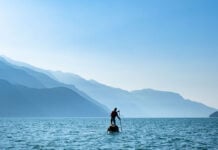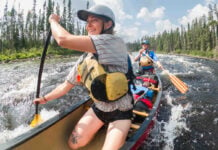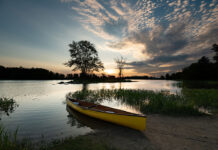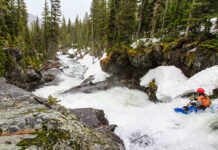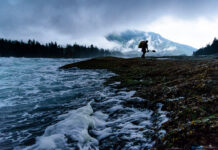Most people want to learn quickly, thinking fast progress makes better skills. Unfortunately, learning doesn’t work this way—on the water and elsewhere. Push too far, too quickly and whitewater paddlers risk making mistakes they’re not equipped to handle. So, what’s the first lesson for learners about fast paddling progress? Slow down!
Paddling progression can’t be rushed
A young friend illustrated the pitfalls of paddling progression not long ago. A talented paddler, he quickly progressed from beginner to intermediate, jumping from one test river to the next. His success encouraged him. His friends were amazed. And it seemed his progression would continue.
Unfortunately, on the tenth or so rung up the river ladder, he lost control in a shallow rapid. Suddenly upside-down, he took a couple of rock hits and his otherwise excellent roll failed. Carping for air led to a dislocated shoulder followed by a difficult swim to shore. Afterwards he struggled with the question: He was doing so well, progressing so fast, what went wrong?

The reflexes and smooth technique of top paddlers can’t be learned quickly. Sharp reflexes and smooth technique build slowly from extensive practice, and—unknown by the novice—these skills actually consist of two different kinds of technique: the paddle positions you see and top paddlers carefully practice; and a tight web of correction moves you probably don’t even consider.
Good technique is just half the equation. Rivers are constantly pushing and surging, shifting their currents and are only partly predictable. The game of whitewater requires your technique to be fluid, strong, and versatile enough to match the rivers’ changes. This is especially true as you progress to more powerful whitewater, because it will find any weakness you have.
All it takes is an instant and one little break in your form. An unexpected cross-current grabs the edge of your boat and jars you off balance or flips you upside-down. A surge forces your paddle out of position for a roll. Then, like my young friend, you’re suddenly carping for air. Follow with an unexpected rock hit to your head and suddenly all that fast progression is flushed down the river, out of control and out of breath.
Learning to correct mistakes on the fly
No matter how good your technique, the water will always force such errors, so you must have a broad set of quick corrections.
If the boat’s edge grabs, you slap a brace and apply counter pressure with your knees. If flipped and surging water shoves your paddle out of position, you must be able to drive the blade to the right position and crank the roll.
So the first lesson about fast progression is slow down. You have a lot to learn. All parts of your technique have to be coordinated to keep you upright and moving with the right angle, edge and speed. A mistake can make the entire skill collapse like a house of cards.
The second lesson: you cannot learn without making mistakes. Much of whitewater kayaking is the art of constantly adjusting errors to create your line, and these adjustments and corrections are every bit as important as the ideal technique.
The faster you progress, the more inevitable the plunge becomes.
Few beginners or intermediates realize this is practicing an unseen technique—every time you make an error, you practice strokes and techniques to correct the mistake and regain control. It is part of the skill. More than likely though, these mistakes piss you off because they feel like failures, not useful practice.
Understand you are practicing a safety net of error-correction skills, bringing the boat back into control and bringing your movements back into the proper technique. To be an expert, every error has to funnel back to the correct motion. Without this net, the river magnifies every error and flushes you away.
Mistakes that are corrected are a part of the paddling progression and creates an essential set of skills. When you pursue harder whitewater, it is only a matter of time before the river plunges you and your technique breaks down. The faster you progress, the more inevitable the plunge becomes.
Don’t speed past your safety net
Driving is a good comparison. Aggressive teenagers learn to drive very quickly. The classic problem appears when they get cocky and start speeding, not realizing when they make a mistake, they haven’t practiced correcting errors and don’t have the right timing or touch. The forces involved are far more powerful and happen twice as fast.
Driving is a blast until, going 80 miles per hour the kid skids on gravel, overcorrects and rolls the car. That’s what happens when you progress faster than your safety net of error corrections is formed.
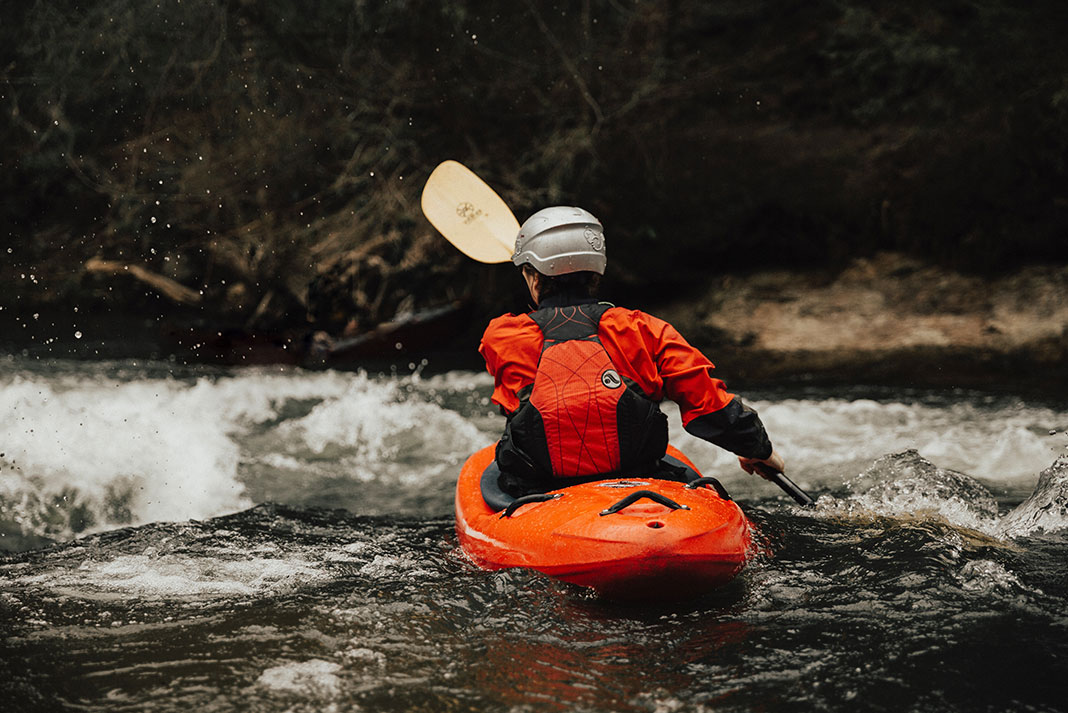
The river is constantly forcing errors and you must be able to counteract them from any position. With time your corrections form an ever-tighter web around the ideal technique. This is how experts funnel the chaos of a rapid into the magic of fluid smoothness.
So take it easy and don’t rush. The beauty of rivers comes from their infinite variation. Moving with them and matching their fluidity requires learning in both seen and unseen ways.
This article was first published in the Spring 2018 issue of Paddling Magazine. Subscribe to Paddling Magazine’s print and digital editions, or browse the archives.
Slow is fast. Push too far, too quick and paddlers risk a small mistake making the technique collapse like a house of cards. | Feature photo: Seth Ashworth



